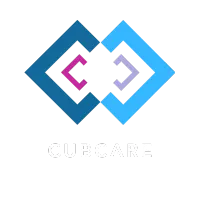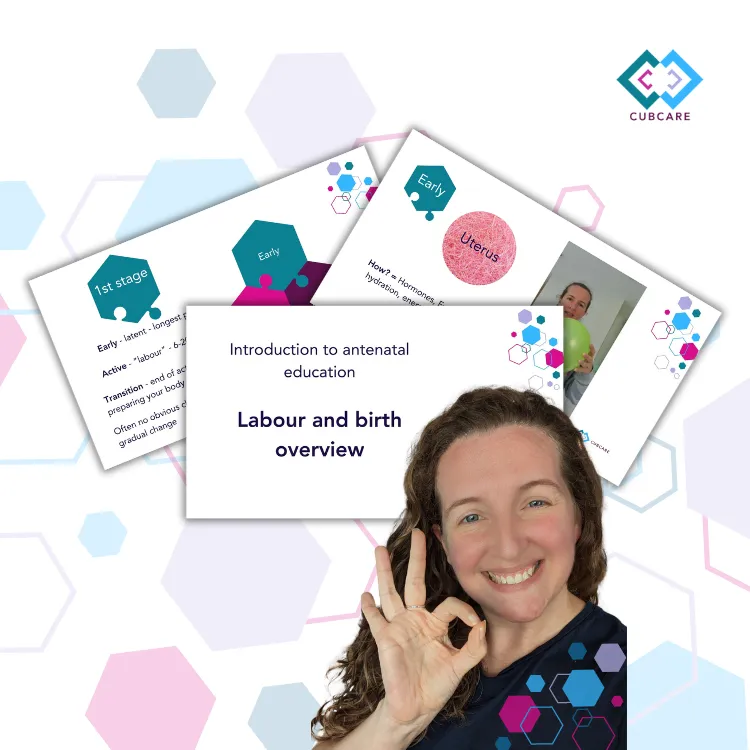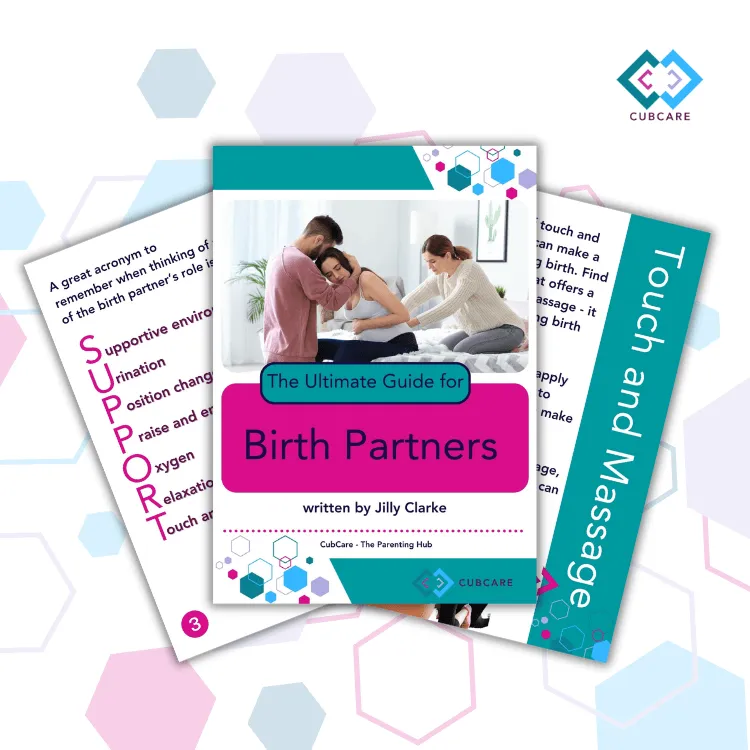Release the piriformis for a better birth
How can releasing the piriformis muscle help with a better birth experience?

Piriformis pain in pregnancy is a pain in the bum!
The piriformis can be a pain in the bum in pregnancy!
The piriformis is a deeper muscle found in the bottom. It is a muscle that connects the thigh bone (femur) to the spine and pelvis at the sacrum.
It’s quite a small muscle that can be overused and quite tight, and can cause issues during pregnancy in particular.
Because the sciatic nerve runs near, or even sometimes through it, a tight and spasming piriformis can press on it causing sciatica type symptoms – such as pain in the bum and down the leg. But even if you aren't suffering with sciatic type pain, a tight piriformis can lead to lower back pain, particularly on one side, a deep ache or pain in the buttock of the affected side, a feeling of stiffness on one side, and an altered gait when you walk.
As pregnancy progresses, your centre of gravity shifts due to the extra weight in your front. To accommodate for this change, your feet will typically rotate outward to increase your base of support. Combining this with hormones that soften ligaments (relaxin and oestrogen mainly), it can make your pelvis more unstable. To counteract this instability, often your hamstrings, buttocks and lower back muscles tighten, particularly if they are making up for a weaker core. These tight muscles can result in more restriction.
When this happens, your muscles that rotate the hip (including your piriformis) become shortened. This can make sciatic or lower back pain worse.
Piriformis tightness is relatively common in pregnancy and can affect around 17% of people according to a 2022 study.
What has the piriformis got to do with birth?
The piriformis is one of the muscles surrounding the pelvis that has a great deal to do with birth.
A tight piriformis, from a shortened muscle, can stop your pelvis moving freely. It can make it difficult for your sacrum to move up and out for baby to be born, and can also make moving your legs more difficult. As baby moves down through the pelvis, if you have freedom of movement you will move your legs in different ways; and a tight piriformis can stop you leg and pelvis moving freely to allow baby space to move down.
The goal in pregnancy is to keep the piriformis, and the other muscles around the pelvis free from restriction and working in harmony. Then when it comes to birth they can relax and do their job to move baby through the pelvis.
What helps piriformis pain during pregnancy?
Even if you are already in pain, movement often can really help. It is always sensible to see a woman’s healthy physio, or an osteopath to personally assess you.
But there is a lot you can do at home to keep the piriformis muscle free. Simple exercises like those below can help to ease out a tight piriformis, but keeping mobile and avoiding log periods of sitting can help to ease symptoms of a tight piriformis; especially if there is sciatic discomfort too.
Movement in pregnancy is the key to better birth experiences. To understand how your body works should be a goal in pregnancy."
Jilly Clarke
How to relieve piriformis pain during pregnancy?
Pay attention to your feet, make sure that your toes are facing forward as much as possible
Have an awareness of your posture – try to keep the tailbone untucked, but don’t let your ribs thrust out either – balance, and a neutral pelvis is what you’re after
Try some piriformis and lower back release exercises
– 1) Seated piriformis stretch. Sit on the edge of a chair, up on your sit bones, feet flat on the floor under your knees. Lift one leg up and place the ankle on top of opposite knee. Allow knee of top leg to rotate down gently. Try to keep ankle straight – having the foot flexed helps. Hold and breathe for a few seconds and then switch legs.
– 2) Table stretch helps stretch the muscles of the back, buttocks, and the back of the legs. Stand facing a table with your feet slightly wider than your hips. Lean forward with your hands on a table, back of a chair or kitchen counter. Keep your arms straight and bend down only as far as you can maintain a flat back. Pull your hips away from the table until you feel a nice stretch in the lower back and back of the legs. You can also move your hips side to side to increase the stretch in the lower back and hips.
– 3) Pigeon pose can be modified depending on your stage of pregnancy and flexibility. Get on your hands and knees on a yoga mat on the floor. Slide your right knee forward so it’s between your hands, angle the knee toward your right hand and foot towards left hand as far as is comfortable. Slide your left leg back, keeping your foot on the floor. Place a rolled towel or a yoga block under your right hip. This will make the stretch easier and allow room for your belly. Lean forward over your right leg. Slowly lower your elbows and chest toward the ground, putting a cushion or yoga block under your head and/or arms for support.
– 4) Hip flexor stretch. Kneel on the floor on your hands and knees. Step one foot in front of you so that your hip and knee are at a 90-degree angle. Shift your weight forward until you feel a stretch in the front of your back hip and leg. If you need some extra support you can use a yoga block on its highest setting to rest hands on. Rock forwards and backwards for 30 seconds, feeling a stretch through your hamstring of the front leg as you lead backwards. Then repeat on other side.
– 5) Childs pose is a wonderful pose during pregnancy. Come to hands and knees on a yoga mat, touch your toes together and make knees slightly wider than hips. Bring bottom down towards feet, leaving hands to stretch out along the mat in front of you. Keep taking deep breaths, stretching the arms forward and keeping shoulders down, feeling the stretch in the low back and shoulders.
– practice some birth preparation massage techniques with a birth partner focusing on releasing tension around the pelvis. Shaking the apple tree is a great one to try.
Try some Pregnancy Yoga to help release tension

CubCare Pregnancy Yoga piriformis release

CubCare Pregnancy Yoga hip flexor stretch
How do I know if I have piriformis pain or sciatica?
Sciatica is often described as a sharp pain that radiates from the lower back down the buttocks and leg along the path of the sciatic nerve. This pain can significantly impact your mobility and overall comfort.
While there can be various causes of sciatica, a tight piriformis muscle is most often the culprit. However, the piriformis, in some people, runs directly beneath the sciatic nerve. So when the piriformis muscle becomes tight or inflamed, it can compress the nerve, causing the burning, tingling, or shooting pain associated with sciatica. So although the symptoms are there, by working on releasing the piriformis it can help to relieve symptoms.
Symptoms of sciatica pain
A shooting pain that starts in your buttock and radiates down the back of your thigh, sometimes reaching the calf or foot.
Pain that worsens with certain activities like sitting, climbing stairs, or squatting.
Pain that is typically one-sided, affecting only one buttock and leg.
Tenderness to the touch in the deep buttock area.
Difficulty putting weight on the affected leg.
Numbness, pins and needles, or weakness in the affected leg or foot
Some special client words about CubCare Antenatal Classes
“This labour was SO much better than the first. Your CubCare refresher antenatal course helped so much for the labour, it was much calmer than the first and much more controlled. The breathing techniques were so helpful – I breathed her out!”
“I felt completely in control for the entire 26 hour labour – I just felt so calm, the breaths were incredible and the consultant commented on how she couldn’t believe I’d refused an epidural. I felt confident enough to question and on occasion challenge recommendations of the midwives so that the birth ended up being as natural as possible! A very positive experience to look back on. Thank you!!”
"Jilly has a talent for creating a really welcoming, friendly and safe space which is great for mums and babies alike. The CubCare Antenatal classes are informative and fun, yet relaxed."
Download our Freebies
© Copyright 2024 CubCare The Parenting Hub - Privacy Policy - Terms & Conditions



